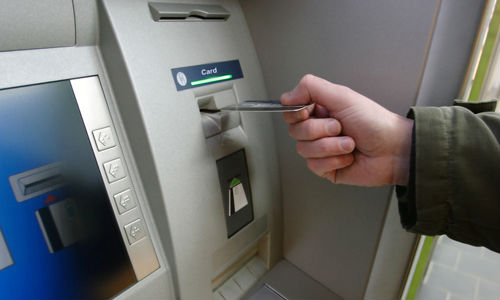For centuries, banks have paid customers for the privilege of holding their money and lending it out to other customers. In fact, it’s safe to say the entire banking system is built upon this key premise. But some of the world’s central banks, including the European Central Bank and The Bank of Japan, have thrown out this assumption and introduced negative interest rates. Last week, Sweden’s central bank lowered its key interest rate target to negative 0.5 percent, from a negative 0.35 percent. The Scandinavian country’s central bank has cautioned that it could cut further still. New York Times writer Neil Irwin has an excellent take on negative interest rates and why people are paying to put their money in banks.
When the E.C.B. and Swedish National Bank set negative interest rate targets, banks generally pass along these costs to customers in the form of bank fees. That means bank depositors pay for the privilege of putting their money in banks, instead of the other way around.
Why would any central bank make such a radical move?
Global financial markets operate under the assumption that lower target interest rates will encourage borrowing, spur consumer spending and investment, and give the economy an overall boost. Lower interest rates also lower the value of a country’s currency, making exports more attractive. While there is plenty of precedent for central banks cutting interest rates in an effort to spur growth, there is very little precedent for negative interest rate targets.
Could this happen in the U.S.?
It’s unlikely, but possible. In the U.S., the Federal Open Market Committee sets the nation’s monetary policy. The FOMC is made up of the Federal Reserve’s seven members and the president of the New York Federal Reserve Bank. That’s just one of 12 regional reserve banks. Four other Federal Reserve bank presidents are given a vote on a rotating basis. The FOMC sets a target for the rate on overnight loans, often dubbed the federal funds rate. U.S. banks are required to have a percentage of their deposits in Federal Reserve Banks overnight to prevent runs on banks during times of financial distress. When banks fall short of these deposit requirements, they lend money to each other overnight. The interest rate on these short-term loans is set by the Federal Reserve.
In the aftermath of the financial meltdown, the FOMC kept the federal funds rate target near zero since December 2008 in an effort to spur lending and boost the economy. Just recently, the FOMC has inched that benchmark interest rate target from zero to 0.25 percent to 0.5 percent.
In a recent Congressional hearing, Janet Yellen, the chairwoman of the Federal Reserve, was recently asked about the possibility of negative interest rates in the U.S. She didn’t rule it out, but she also indicated it’s unlikely. As long as the economy remains on surer footing, the FOMC has indicated it will slowly raise rates over the course of this year.
What are the financial angles of covering low-interest rates and negative interest rates?
Low interest rates can be really hard on the banking system, especially community banks that tend to rely on traditional bread-and-butter banking services. While low interest rates tend to be a major boon for home mortgage lending, they aren’t so great for banks that make their money making business loans. That’s because net interest margin, the spread between what a bank pays for its deposits and the interest it nets on its loans, is compressed when interest rates are near zero. Negative interest rates could even mean many banks would cease to be profitable without introducing substantial fees.
Low interest rates are attractive to business and mortgage borrowers, but considerably less attractive to bankers. That tends to curb demand. As interest rates rise, a bank that makes a fixed, 30-year mortgage loan today will likely be paying much more to its depositors over time than the interest it makes on its loans. That exposes banks to interest rate risk and curbs the volume of loans they are willing to make.
While larger banks can offset these losses from wealth management services, trading, mortgage fees and capital markets income, smaller banks tend to have fewer lines of business and thus, fewer ways to offset these losses.
There are also plenty of consumer angles to explore. Back in 2008, Americans were getting about a 4 percent return on certificates of deposit. But that rates is barely above zero today. That’s made it terrible for retirees and investors who want safe places to park their money.
How do these interest rates measure up compared to the past?
Volcker: To put it all in perspective, Paul Volcker, chairman of the Federal Reserve in 1979, raised the U.S. benchmark interest rate to a whopping 15.5 percent. At that time, the Fed was worried about inflation and high unemployment, not sluggish growth. By 1980, the fed funds rate target was 2o percent. As the economy slowed down, the FOMC slowly lowered interest rates and inflation fell to 2.5 percent in 1983, from nearly 15 percent three years earlier.
Greenspan: By the late 1980s, Alan Greenspan led the Fed in easing rates in the aftermath of the 1987 stock market crash. By late 1989, inflation was creeping up, and Greenspan again hiked interest rates to close to 10 percent. While that response pushed the economy into recession into the early 1990s, it did head off inflation. Neither inflation nor interest rates have returned to those heights in the last 25 years.
By the mid-1990s, Greenspan’s Fed continued to keep interest rates low in a push to lower unemployment to record levels. By 1996, Greenspan first warned of “irrational exuberance” in the financial markets, but while taking little action to hike interest rates. By June 2003, the Fed had cut its benchmark rate to 1 percent, a historic low.
Bernanke: Ben Bernanke arrives as head of the Fed after the FOMC has raised interest rates at 14 consecutive meetings. Three more rate increases occur on Bernanke’s watch, pushing the fed funds rate target to just over 5 percent.
By December 2008, Lehman Bros. had met its demise and the financial markets were in freefall. Bernanke’s FOMC pushes interest rates to nearly zero, marking a new era for the Fed.
Yellen: Janet Yellen becomes chairwoman of the Fed in 2014 and signals that the Fed will begin slowly raising its benchmark interest rate amid a stronger economy. In December 2015, the Fed inches up the key interest rate for the first time since December 2008.










